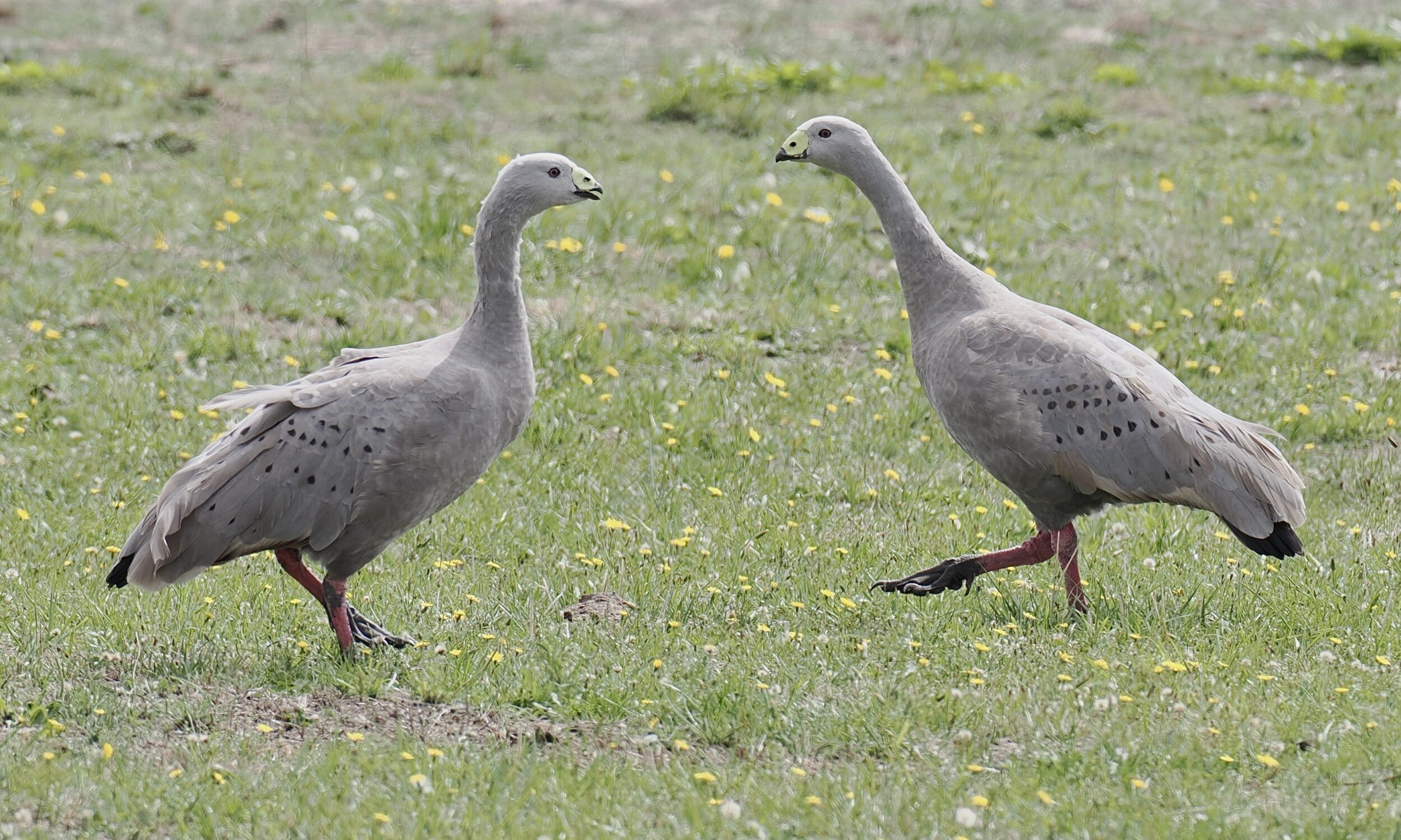Cape Barren geese are monogamous, and a “breeding pair” usually forms a life-long bond.
During the breeding season the pair focus almost exclusively on each other, their nest and their eggs/chicks.
After breeding season (generally, in tussocky wild places on offshore islands) Cape Barren geese usually fly to grassy places.
These are often on south-coastal, mainland-Australian farmland, or paddocks on the larger offshore islands.
In “grazing mode”, the geese are more generally-sociable.
However, as you can see in the immediately-preceding chapter’s photo, even within grazing “flocks” the pair-bonds are conspicuously evident.
This post’s photo shows one such pair, also within the group that were grazing in a Flinders Island cattle paddock on 26 March 2025.
Some of this species’ “signature features” are clearly evident in today’s image:
Red legs, with large black feet.
Distinctive plumage.
The yellowish cere which covers a large portion of the beak’s upper surface.
In “goose terms”, the body is relatively big and heavy, but the head is relatively small.
Males and females have nigh-identical plumage and general “appearance”, but the male is usually somewhat larger than his partner.
—
Cape Barren Geese fly well, once airborne, but most of the time their large feet are on the ground.
(this series’ next chapter will give you some sense of just how much effort is involved for these birds to “take to the sky”)
This species is probably the world’s least “aquatic” goose.
Cape Barren Geese mostly stay on dry land, and only venture into water in order to escape terrestrial predators, and to protect chicks from them.
According to some naturalists, the species is “goose-like”, but is not a “real” goose!

Comments